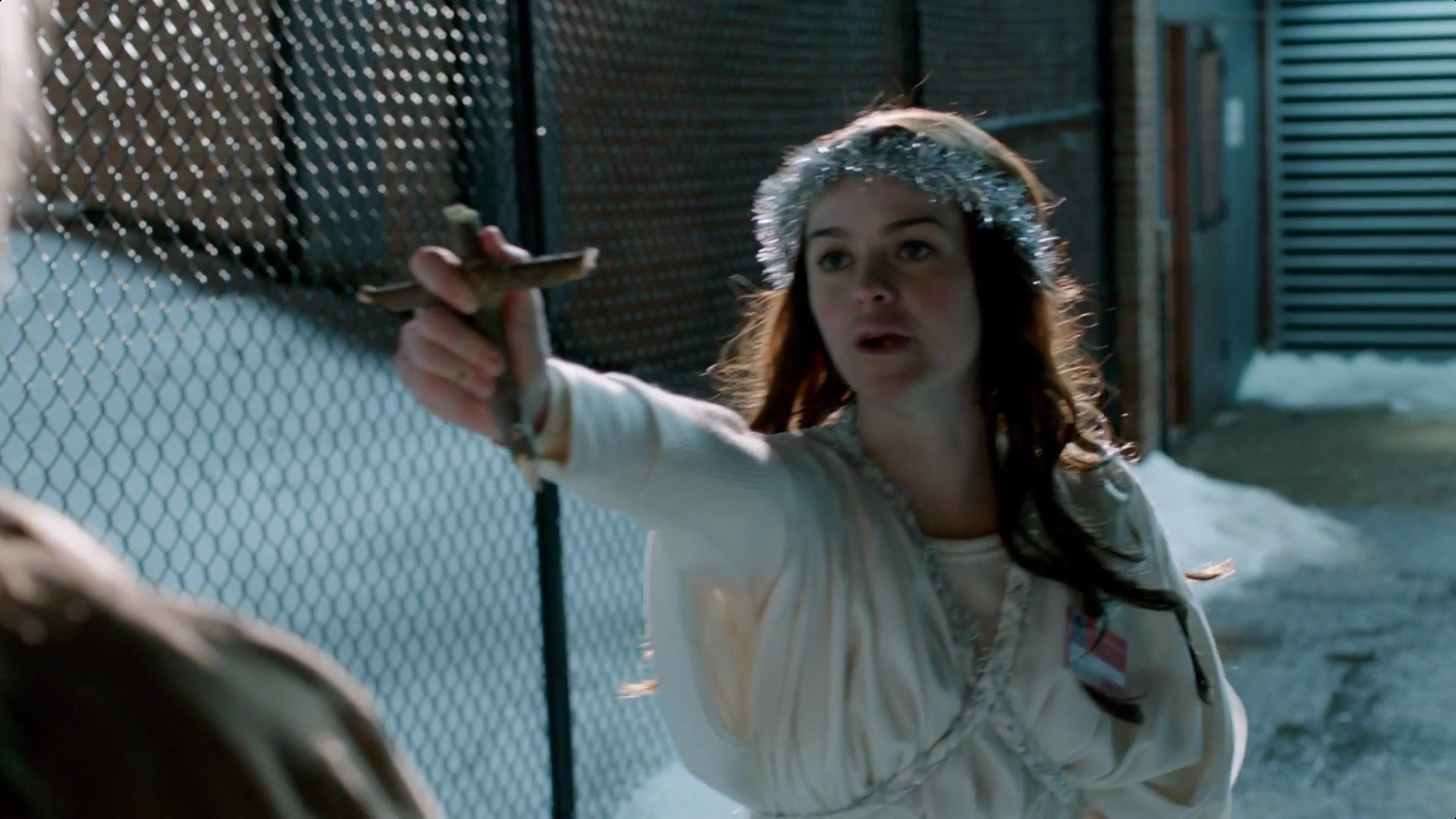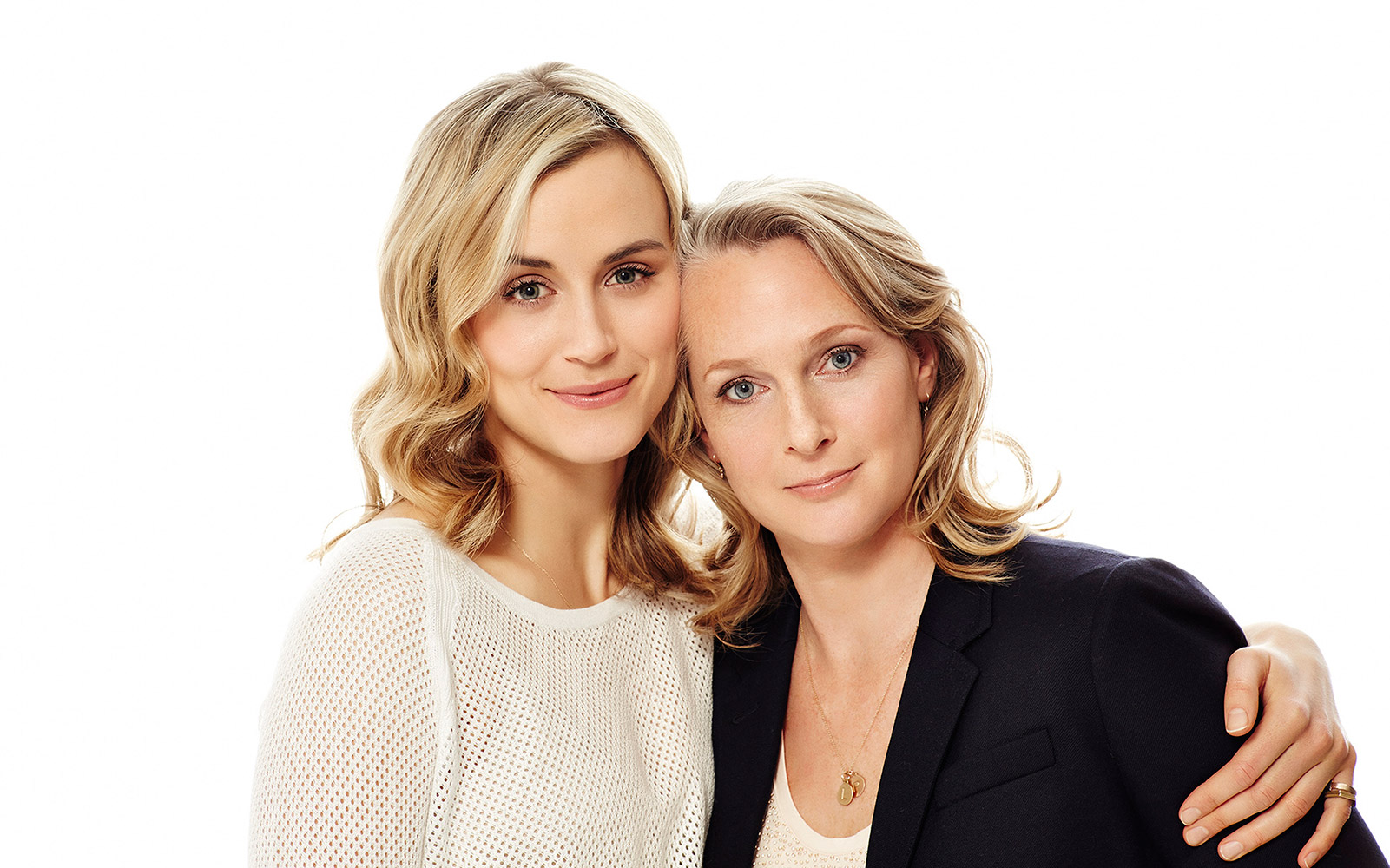White Trash is the New Black
Christina Belcher / University of Southern California

“You believe in Hussein Obama? Electric cars, and Shakespeare books, and do you go out to eat at restaurants? I don’t have any of that, okay: all I have is Him.” Tiffany “Pennsatucky” Doggett—Litchfield Prison’s white trash, Christian fundamentalist, and the first true villain of Netflix Original Orange is the New Black—paints a vivid picture of white liberalism when she confronts Piper Chapman, the show’s protagonist and (tragic) hero, for shaking her belief in God. Chapman stakes her claim in secularism, which Pennsatucky sees as the religion of liberal whiteness. Despite (or perhaps because of) her lack of religion, Piper Chapman, not Pennsatucky, is the moral compass of Orange is the New Black.
The show’s moral imperative—and a guiding value of liberal America—is multiculturalism. This also happens to be the value that Pennsatucky most lacks. Multiculturalism is a by-product of racial liberalism: the system of privilege that arose in mid-twentieth century US national culture and replaced a biological model of racism with a cultural one. Within this cultural model, both whiteness and blackness can assume privileged or stigmatized forms based on their adherence to normative cultural criteria (i.e. the heterosexual family unit, a middle-class income, patriotism). According to Jodi Melamed, this cultural model “promoted an idea of a racially inclusive U.S. national culture as the key to achieving America’s manifest destiny and proof of American exceptionalism.”1 Under such a national culture of inclusivity, wealth and resources can be legitimately denied to those who do not value diversity. Piper Chapman, arguably the best representation of the white liberal America in contemporary programming, becomes the most deserving and felicitous American citizen on the grounds of her anti-racism.
While Chapman commits privileged faux-pas throughout the first season, we know from her discomfort with the prison’s racial segregation that she values diversity, just as the show itself values its multicultural cast of characters. After the rude awakening of the prison’s intake process, Chapman is treated well by Morello, another white inmate, who provides her with tissues and a toothbrush. Morello needs no “thank you” for this kindness because “we [white inmates] take care of our own.” Visibly stunned, Chapman questions “our own,” and Morello jovially schools her: “Oh, don’t get all PC on me. It’s tribal, not racist.” Piper looks disgusted at Morello’s “tribalism,” and is clocked by a black inmate who understands that no benevolent white woman will be providing her with comforts like tissues and a toothbrush on her first night in prison.
Chapman’s multiculturalist ideals prove ineffective when Officer Healy rigs the election of the Women’s Advisory Council to make her a representative. Chapman advocates for preventative healthcare, reviving the broken GED program, re-opening the running track, and providing legal counseling. In her role as “a nice white lady” (which she names as her life’s ambition on several occasions), Chapman wants to address the problems that plague inmate populations, while the representatives of color want nothing more than a better brand of hot sauce in the cafeteria. But the joke is on her, as black representative Taystee scoffs, “Don’t be gettin’ all Amistad on me Chapman. Healy look like he gunnin’ for change?” Chapman is too naïve to understand that she cannot change Litchfield Prison, a lesson that the inmates of color learned long ago.

Still, viewers identify with Chapman’s disgust, and when the initial reviews emerged, critics were enamored by the show’s commitment to diversity, progressive appeal, and potential for moving the conversation about the broken criminal justice system forward.2 But the first season’s focus on one character undercuts any potential it might have for a transformational politics of prison abolition or even reform: Pennsatucky.
One of the best pieces of criticism to emerge amidst buzz about the first season, is Yasmin Nair’s “White Chick Behind Bars,” with the subtitle, “Netflix’s Orange is the New Black gets an ‘A’ on queer issues, a ‘C’ on race and an ‘F’ on class.” While Nair gives the show an F on class because of its failure to address the structural inequalities that affect the relationship between prisons and queers, people of color, and the poor, she ends her piece with Pennsatucky: “We have no way to explain or address a world of relentless poverty that also breeds hatred towards every other kind of minority, and our best choice is to render the people in it as arch villains, beyond hope and redemption.”3 Pennsatucky’s world, one that was bred of poverty and likewise breeds hatred toward all minorities, is absolutely necessary to the maintenance of the show’s multiculturalist ethos, and it is this ethos that prevents the show from doing any real work toward moving the conversation about the state of US criminal justice forward.
White poverty in America—associated with blind and blinding religious fundamentalism, racism, and homophobia—seems the natural enemy of liberal whiteness and its multiculturalism. If Americans stigmatize forms of blackness that fail to adhere to an idealized national culture, giving cause to black inequality, we likewise pathologize abject forms of whiteness. Pathologizing whiteness is what allows black inequality to appear fair and legitimate, rather than as a fact of racial power. White trash Pennsatucky captures this failure of adherence to an idealized American national culture. She does so most explicitly when her naked body flanks her boyfriend’s as they smoke cigarettes and discuss her upcoming abortion: a procedure necessary to keep her out of jail for endangering the fetus with her drug use. The young man asks her to keep it because “you show ‘em a baby, you get good money from the government” (ep 12).
Still, the show gets a lot right. The dehumanization of the prison population, physical and sexual assault by guards, the horrors of SHU (solitary confinement), the lack of legitimate mental and preventative healthcare. But the show’s central conflict is not around these issues that plague prisons and the communities of color that are funneled into them. Rather, the central conflict takes place between the upwardly mobile, sexually fluid white protagonist and the downwardly mobile, fundamentalist white hick. Pennsatucky’s poor white ilk becomes the natural enemy of a middle class white woman, who is simply trying to oppose the prison’s injustices. While Chapman’s privilege is played for comic relief, there is never an indication that her middle class whiteness as the national cultural standard has anything to do with the incarceration of the queers and women of color who surround her. Orange is the New Black will never be able to critique the US criminal justice system by accepting Pennsatucky as the natural enemy of multiculturalism and “the cool WASP, privileged white girl” as its hero.4
Pennsatucky as villain distracts viewers from a woman whose administrative violence terrorizes Litchfield prison to a degree unimaginable by the comparatively powerless Pennsatucky. Natalie Figueroa is the prison administrator with whom Chapman casts her lot at the first season’s close. Dropping her good liberal commitment to prison reform, Chapman uses her position as an upwardly mobile white woman with a media-connected boyfriend to strike a public relations deal with Figueroa. “Fig” bargains with Chapman for public immunity, clearing her to continue embezzling money from the prison to fund her teeth bleaching and new Mercedes, the actions that are responsible for the prison’s shrinking budget and lack of resources. Yet when Chapman beats Pennsatucky to a pulp at the conclusion of the first season, multiculturalist justice prevails: the white liberal prevails over white trash.

This is the portrait of white pathology. It guarantees the continuation of the myth central to the spirit of multiculturalism: that America is an exceptional meritocracy. White or black, those who are deserving will prosper, and those who are not will fail. An empty commitment to multiculturalism fuels this skewed system of stigma. It lets more systemic forms of violence against queers and women of color off the hook, while further deprivileging the economically disadvantaged figure of “white trash.” Most telling is that the Pennsatucky character in Piper Kerman’s memoir was not a Christian fundamentalist bent on reigning hellfire on the heads of minorities and queers, but rather part of a group Kerman called the “Eminemlettes”: “Caucasian girls from the wrong side of the tracks with big mouths and big attitudes, who weren’t taking shit from anyone (except the men in their lives). They had thinly plucked eyebrows, corn-rowed hair, hip-hop vocabularies, and baby daddies…”5 Among the changes Kohan made to craft Chapman’s story from Piper Kerman’s memoir was to cleanse Pennsatucky of any African American comportment: the hip-hop vocabulary, the corn-rows, the baby daddy. The show needs a villain, and that villain needs to be unwaveringly white. She needs to be the worst kind of white.

In “Locked up: racism in the era of neoliberalism,” Angela Davis claims that today, the freedom of the capitalist market stands in for freedom itself. Morally legitimate multiculturalist world citizens deserve this market freedom, and those poor and oppressed peoples—those who end up cycled through the criminal justice system—are solely responsible for their plight. They cause their own criminalization just as they are to blame for their economic failure.6 The poor white woman who finds herself on the wrong side of the multiculturalist tracks legitimates this neoliberal brand of freedom: she had the choice to make between fundamentalist Christian bigotry and liberal open-mindedness, and for her crimes against diversity, she must pay.
And she should be held accountable for her racism and homophobia, no matter how and where it was bred. We abhor Pennsatucky for her WAC campaign promise of a “whites only bathroom” and her impulse to alert the guards to “lesbian activity” when she witnesses acts of tenderness pass between women within the prison’s walls. We should critique the immense and powerful Christian “moral majorities” of America that convince poor white folks that people of color and queers are trampling their livelihoods and civil liberties. The combination of poverty and fundamentalism that engenders Pennsatucky’s racist, homophobic zealotry does not excuse it. Still, in relishing the attack that ends the first season, with our mouths agape, finally satisfied that Piper Chapman has beaten Pennsatucky, we cheer for liberal whiteness and excuse an empty multiculturalism that pits these two women against one another in the first place. Chapman and Pennsatucky are actually two sides of the same coin, two differently oppressive and hegemonic forms of whiteness that perpetuate the prison as home to the women and queers of color for whom the title is true: orange is the new black.
Image Credits:
1. Taryn Manning as Tiffany ‘Pennsatucky’ Doggett
2. Piper Chapman in lunch line
3. Pennsatucky with her boyfriend
4. Actress Taylor Schilling with Author Piper Kerman
Please feel free to comment.
- Jodi Melamed, “The Spirit of Neoliberalism: From Racial Liberalism to Neoliberal Multiculturalism,” Social Text
89.24 (2006): 7. [↩] - Riese, “How ‘Real’ Is ‘Orange Is The New Black’? Comparing The Show To The Memoir To The Numbers,” Autostraddle, 4 August 2013. [↩]
- Yasmin Nair, “White Chick Behind Bars,” In These Times, 18 July 2013. [↩]
- Radish, Christina. “Creator Jenji Kohan Talks ORANGE IS THE NEW BLACK, Her Research Into Prison Life, and Graphic Sex Scenes.” The Collider . [↩]
- Piper Kerman, Orange is the New Black: My Year in a Women’s Prison, New York: Spiegel & Grau, 2010. 137. [↩]
- Angela Davis, “Locked up: racism in the era of neoliberalism,” The Drum, 19 March 2008. [↩]
Pingback: The Reign of Whitey is Over? Christina Belcher / University of Southern California | Flow
Multiculturalist research papers will show another point of view. The perspective of being a cultural geek is not scary for students nowadays. It’s like a mass psychosis just waiting for the spark to set the world afire. I wonder how many of those fanatics who voted for him secretly contemplate the idea of a final solution to their problem. It has a huge emotional impact.